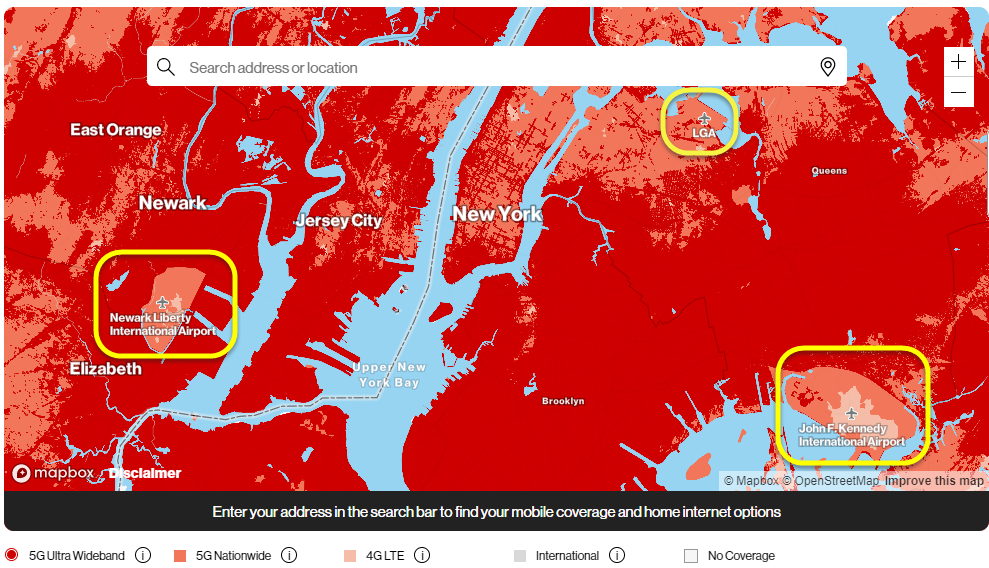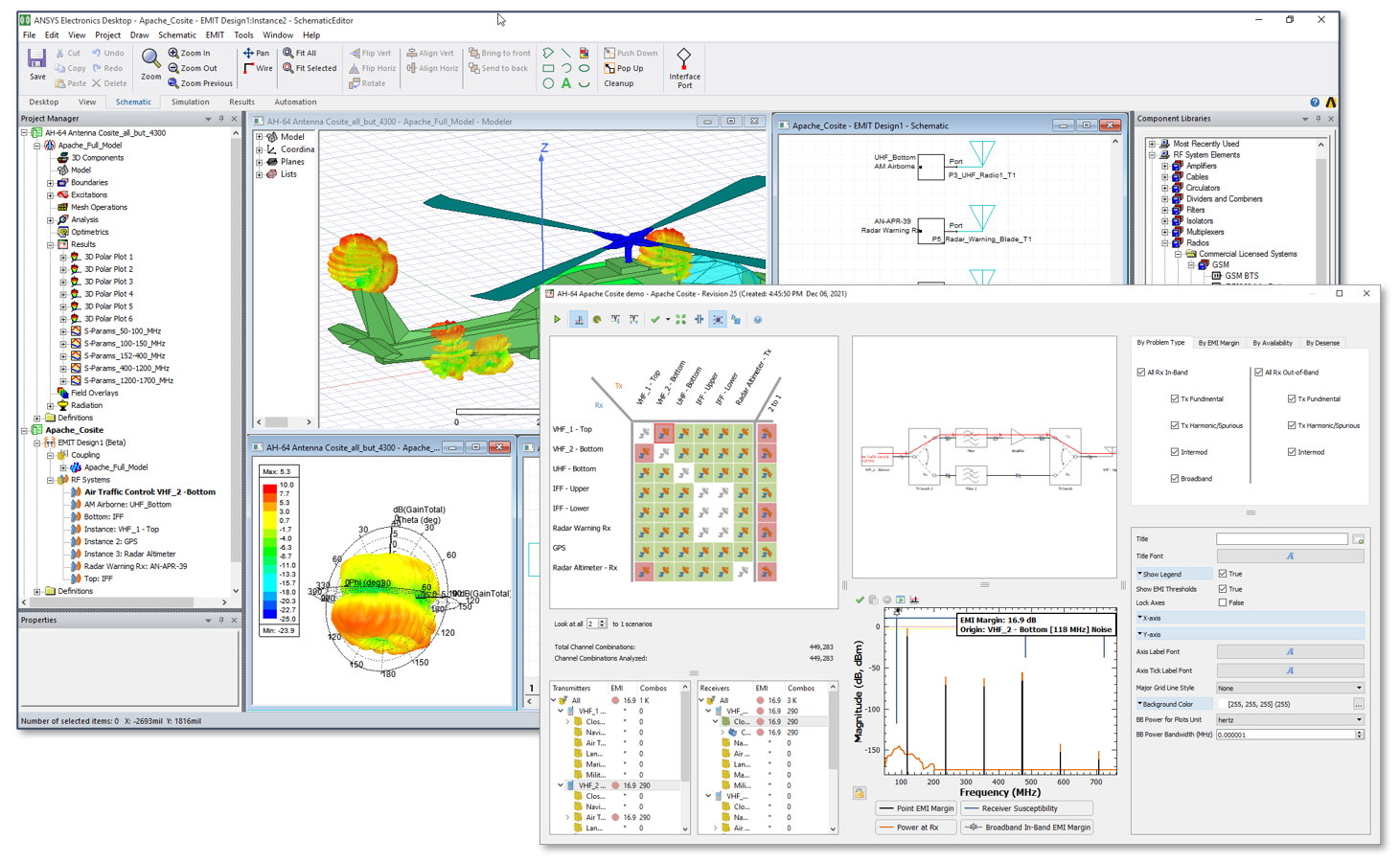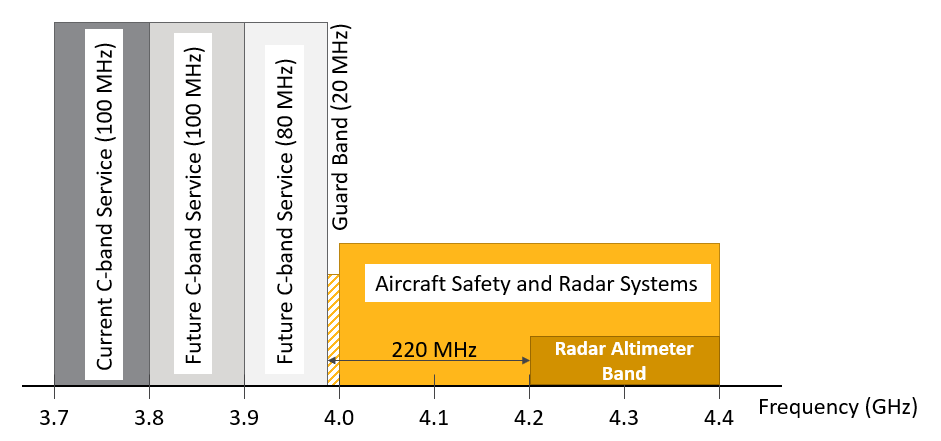The new 5G C-band service is now up and running in the U.S., and subscribers are finally starting to see some of the promise of 5G. The new C-band services are primarily in spectrum allocations between 3 and 4 GHz, providing the wider channel allocation bandwidths necessary to deliver significantly higher data throughput. At the same time, signals at this frequency can travel significantly farther than with the mm-wave band. AT&T and Verizon customers are reporting download speeds ranging from 400 megabits per second (Mbps) to as much as 800 Mbps, a nearly 10x improvement over 4G LTE systems.
You can’t get this faster service at the airport though— at least not yet. The U.S. Federal Aviation Administration (FAA) has worked out a six-month agreement with the telecom providers to keep the C-band transmitters turned off near the affected airports due to ongoing concerns about the potential for interference with aircraft radar altimeters. During this time, the FAA continues to examine the radar altimeter systems used in commercial aircraft for certification, as well as to further study possible additional constraints needed for the nearby 5G C-band base stations.
 Figure 1 – Verizon 4G/5G coverage map around the New York City airports, dated Feb. 24, 2022 (https://www.verizon.com/coverage-map/). The lighter colors around the airport indicate that lower-frequency 5G service is available within the region, but not the new Ultra Wideband (C-band) service.
Figure 1 – Verizon 4G/5G coverage map around the New York City airports, dated Feb. 24, 2022 (https://www.verizon.com/coverage-map/). The lighter colors around the airport indicate that lower-frequency 5G service is available within the region, but not the new Ultra Wideband (C-band) service.
This six-month hiatus currently affects about 500 towers nationwide at around 87 airports. As of Feb. 25, an estimated 90% of commercial airline aircraft have been approved for landing under the current agreement based on their radar altimeters’ ability to deal with interference from C-Band 5G base stations outside the airport zones on the 3.7-3.98 GHz bands. At some airports, the aircraft approved for landing takeoff and approach vary by runway, creating aircraft scheduling challenges between airlines and airport management. For example, at Chicago’s Midway International Airport, only one runway is cleared for 100% of the aircraft types served by the airport, whereas the other four runways are cleared for between 81% and 95% of aircraft types.
In July, Verizon and AT&T are expected to energize the C-band service towers for enhanced 5G service closer to, and perhaps including the airport campuses. During that time, the telecom service providers and the FAA will presumably have negotiated and settled on the acceptable parameters of operation for those new C-band 5G base stations. In addition, it is expected that the FAA will have completed testing on the radar altimeters that are currently in use throughout the aviation industry and their interactions with closer 5G towers.
How Simulation Can Help
It is somewhat surprising that this issue has come up when there are simulation tools such as Ansys EMIT which can predict these interference effects and provide guidance for mitigation. For difficult interference problems, the Ansys EMIT toolkit, an integral component of the Ansys Electronics Desktop and part of the Ansys HFSS portfolio, is designed to consider wideband transmitter emissions and assess their impact on wideband receiver characteristics.

Figure 2 – ” Ansys EMIT is an integral component of the Ansys Electronics Desktop and provides wideband interference simulation and mitigation for multiple RF systems and emission sources within a localized environment. EMIT is capable of utilizing high-fidelity installed antenna coupling data simulated by Ansys HFSS to capture wideband installed antenna-to-antenna couplings.”
When combined with accurate models for the radar altimeter antennas installed on host aircraft, and for the 5G base station antenna systems, we can form an accurate prediction of the maximum expected potential for interference. This interference prediction is useful for both in-channel conflicts as well as spectrum conflicts which might occur outside the radar altimeter band.
In this blog series, we will illustrate 5G C-band interference potential with a candidate radar altimeter system during an aircraft landing approach.
Examining the C-Band Spectrum neighborhood
Before considering simulation, let’s review first the spectrum situation in the C-band part of the radio spectrum.

Figure 3 – C-Band spectrum allocation showing the C-band 5G service channels (3.7-3.98 GHz) in proximity with the Aircraft Safety and Radar Systems band (4.0-4.4 GHz)
The 5G service providers purchased the rights to a country-wide spectrum from the FCC in December 2020 at a combined cost of $69 billion to gain access to up to 280 MHz of combined bandwidth. This allocation covers three separate 5G channels:
– 3.7-3.8 GHz: Currently being phased in for current C-band tower deployments. This band is the primary subject of concern because it is being made available now.
– 3.8-3.9 GHz: Future 100 MHz of spectrum that will be added to further increase capacity.
– 3.9-3.98 GHz: Future 80 MHz of spectrum that will likely be added after the first two 100 MHz bands have been fully deployed.
So far, only the lowest channel with the greatest channel spacing from the altimeter band is being considered, but the closer (future) 5G channels may create even higher potential for interference between the two systems.
In our next blog installment, we’ll examine the 5G radio wideband emissions model and a candidate radar altimeter receiver model with wideband performance—essential ingredients to examining the in-band or out-of-band interference potential.
Also read:
5G and Aircraft Safety: Simulation is Key to Ensuring Passenger Safety – Part 2
5G and Aircraft Safety: Simulation is Key to Ensuring Passenger Safety – Part 3
5G and Aircraft Safety: Simulation is Key to Ensuring Passenger Safety – Part 4
Share this post via:





Comments
There are no comments yet.
You must register or log in to view/post comments.